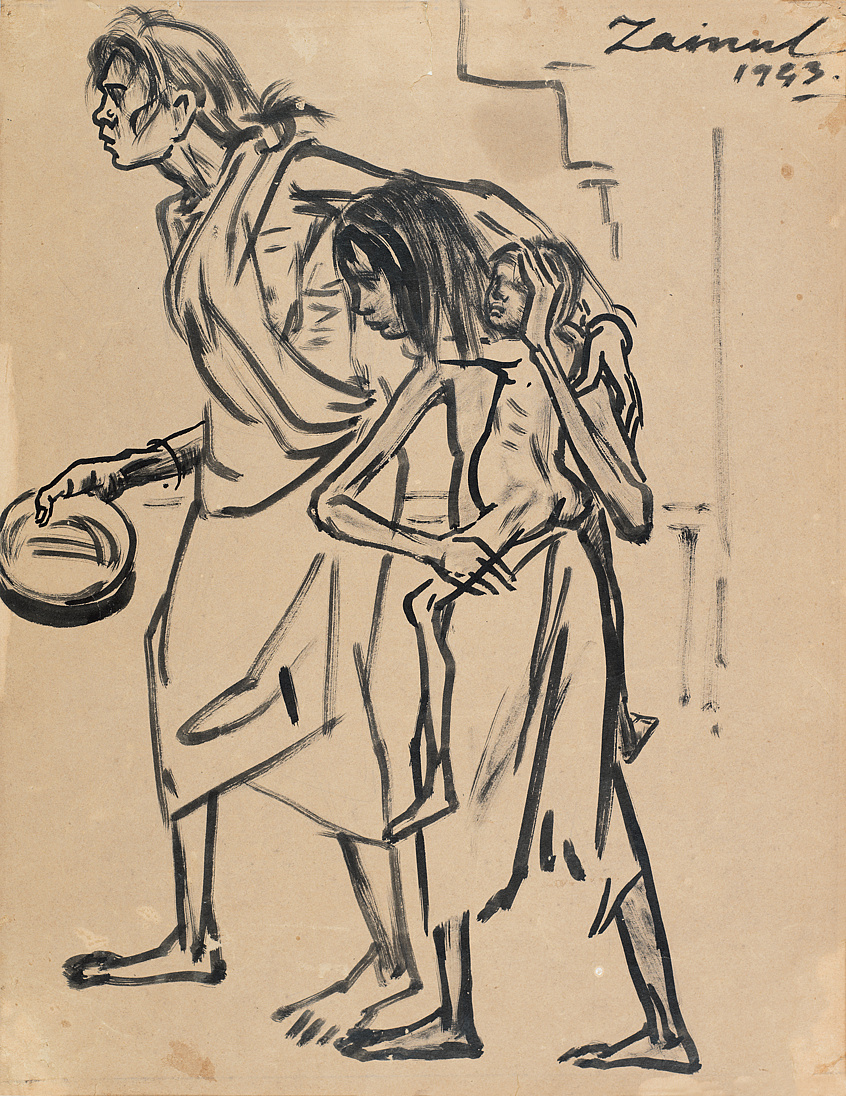The Bengal Famine 1943–44 wrecked over three million lives across undivided India during the Second World War while its colonized subjects supported the Western war effort leading to a diversion of food resources and a drain on the economy due to wartime industrial production and thousands of native troops joining allied forces.
With the threat of a Japanese invasion of Burma, the British Raj carried out the scorched-earth and boat-denial policy that resulted in mass starvation, displacement, chronic disease, as well as private hoarding and profiteering by the landowning elite of the Bengal province. Despite the catastrophic conditions arising from imperial policies, the hostile Churchill government continued to prevent the import of food grain and other foreign aid.
Leaving his teaching job at the Government School of Art in Calcutta, Zainul Abedin set forth to unveil the horror in his famine sketches. Made with rapid brush strokes, the sketches not only form a gripping account of the famine’s vicious spread and expose the structural ties between hunger and imperial violence, but, alongside the works of Chittaprosad, Sunil Janah, and others, they recount a common struggle of the avant-garde under colonial rule on the Indian subcontinent. Abedin remained a cultural organizer, pedagogue-activist working across the region, establishing art education as part of the public school system in Bangladesh (then East Pakistan), and he became engaged in the Bangladesh Liberation War movement.

